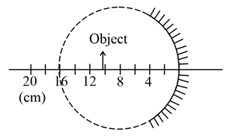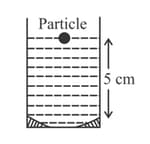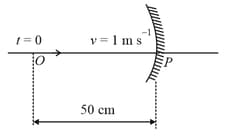A ray parallel to the principal axis,after reflection,will pass through the principal focus.
Important Questions on Reflection of Light
A spherical mirror is obtained as shown in the figure from a hollow glass sphere, if an object is positioned in front of the mirror, what will be the nature and magnification of the image of the object? (Figure down as schematic and not to scale)


(Graphs are drawn schematically and are not to scale)
A point object is moving uniformly towards the pole of a concave mirror of focal length along its axis as shown below. The speed of the object is . At , the distance of the object from the mirror is . The average velocity of the image formed by the mirror between time and is:


An object is placed at a distance of from a convex lens. A convex mirror of focal length is placed on another side of the lens at as shown in the figure. The image of the object coincides with the object.

When the convex mirror is removed, a real and inverted image is formed at a position. The distance of the image from the object will be
An object is placed beyond the centre of curvature of the given concave mirror. If the distance of the object is from and the distance of the image formed is from the radius of curvature of this mirror is:
| Object pin | Convex Lens | Convex Mirror | Image Pin |
| 22.2 cm | 32.2 cm | 45.8 cm | 71.2 cm |

